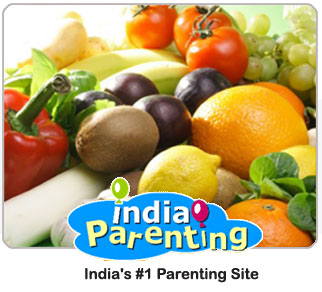 Name: Simi Khan
Name: Simi Khan
Little Hints For Cutting Calories
Even if you aren’t actively following a diet plan, you can maintain your current weight by keeping a few tips in mind to keep the unwanted pounds off:
-Trim calories in ice cream cones. If you like your ice cream in a cone, get the wafer rather than the waffle.
-Start drinking your coffee black. Creamers, sugars, and flavored syrups can add up to several hundred calories.
-Drink diet soda or sparkling water instead of regular soda.
-If you make popcorn for a snack, use half the amount of butter and mix in some lemon juice.
Size Up Your Servings For Accurate Calorie Counts
People who are trying to follow a diet plan often underestimate the importance of portion control. One of the advantages of a food delivery service is that the portions are already measured. But it’s easy to confuse portions with serving sizes, especially when dining out at restaurants where a single portion (one person’s order) may be enough servings for 3-4 people. Keep these images in mind to remember recommended portion sizes and it will be easier to count calories:
-3 ounces of meat is about the size of a deck of cards.
-a medium apple or orange is about the size of a tennis ball.
-1 ounce of cheese is about the size of four dice.
-a medium bagel is the size of a hockey puck.
Protein Tips
Go Fish: Add Seafood To Your Protein Diet
Fish and other types of seafood such as shrimp and scallops are excellent sources of protein, and they also provide omega-3 fatty acids, which are among the healthful types of fats that the body needs. Substitute fish for red meats in your diet and you’ll get your protein with less fat. Don’t like fish? Keep an open mind. There are many types of fish available in high-end grocery stores and you don’t have to drown them in tartar sauce to make them tasty. Fish adapt well to flavorful, low-fat seasonings including lemon and dill. When buying fresh fish, look for fish with a moist, lustrous surface, with no dry spots or discolorations. If you are buying frozen fish, buy it still frozen before it has defrosted. Try to eat fresh fish within a day or two of purchase, but you can store frozen seafood safely for up to six months. The best way to defrost frozen seafood: If it’s vacuum-sealed, place the packages in a bowl of cold water to thaw. If not, place the fish on a plate in the refrigerator for a few hours or overnight, and cook within a day of defrosting. When preparing fish, avoid contamination by washing your hands and the cutting board, knives, and other utensils that came in contact with the raw fish or its juices before handling other foods. Remember not to overcook fish most types of fish will be cooked through after about 10 minutes. The flesh should be flaky and opaque.
Go Nuts For Protein And Get A Side Serving Of Heart Health
Don’t put nuts in the same category with salty chips or other junk food snacks. Instead, modest amounts of nuts can be a healthy part of a moderate protein diet, like Chef’s Diet. Nuts are heart-healthy, too. Several large, long-term nutrition studies including the Physicians’ Health Study and Nurses’ Health Study, have shown a consistent 30 percent to 50 percent reduction in the risk of heart attacks and heart disease over time among people who reported eating nuts several times a week compared with people who said that they rarely ate nuts. Most nuts are rich in an amino acid called arginine that makes a molecule called nitric oxide, which has been shown to relax constricted blood vessels and improve blood flow. But that doesn’t mean you should eat a whole jar at one sitting. Although nuts are high in many nutrients and in healthy fats, they are high in calories, too. For example, one ounce of walnuts (a small handful) is nearly 200 calories. If you’re counting calories, limit your nuts to a handful at a time, whether you’re eating them straight from the jar or sprinkled in a salad or main dish and look for ways to save calories elsewhere.
High-Protein Diets Don' t Promote Long-Term Health
Protein is essential for the body to function, and most healthy adults can tolerate a high-protein diet, at least for the short term. But because the body can’t store protein, it processes excess protein out of the body in urine. People with liver or kidney disease have problems eliminating the waste products that remain after the body absorbs the protein it needs. Also, excessive levels of protein in the body can contribute to the development of kidney stones and osteoporosis. A moderate protein diet is the best diet plan for most people for overall long-term health. If you have kidney disease, you may need to adhere to a low-protein diet. If so, some ways to cut down on protein without eliminating it include using thinly sliced meats in a sandwich, using strongly flavored cheeses so you need to use less of them, and substituting pasta or vegetables as a main course, with a small serving of meat on the side.
Know Which Protein Sources Have More Good Fats
Remember that when you eat foods high in protein you are also consuming carbohydrates and fats. Pay attention to the fat proportions in a protein diet. For example, when you eat marbled beef or drink whole milk, you’re getting a lot of protein, but you also are consuming a lot of the unhealthy types of fats (saturated and trans fats). Here are some strategies for eating a protein diet while trimming the fat: If you like red meat, look for lean cuts (90 percent or more lean is best). Love your dairy products? Try substituting low-fat milk, yogurt and cream cheese for the full-fat versions, and you’ll get the benefits of protein with a little less fat. But beware of “fat free†dairy products many of them have the same number of calories as low-fat versions, but with more chemicals and preservatives.
Poultry Protein Prep Tips
Poultry, whether it is chicken, turkey, quail or duck, is an excellent source of protein, but it can be high in fat. When shopping for poultry, look for lean cuts, which mean the white breast meat without the skin. Ground poultry has as much fat as ground beef because it includes dark meat and skin as well as white meat. So if you want ground chicken or turkey, look for a low-fat version made from breast meat only. Keep fresh poultry products refrigerated and use them within a few days of purchase. Or, if you like to shop ahead, you can freeze fresh poultry for several months, then defrost overnight in the refrigerator or in a microwave when you are ready to cook it. Try to avoid frying chicken in shortening or using breading breading soaks up oil during cooking and adds fat and calories. Instead, bake or broil chicken and season it with healthy spices such as oregano or rosemary that add flavor as well as antioxidants.
Prepared Meals Guarantee Proper Protein
Concerned about getting enough of the right types of protein in your diet? Consider ordering meals prepared by companies specializing in healthy diets that include a balance of nutrients. With prepared meals, you don’t have to worry or wonder about whether you are getting adequate protein, and you won’t get bored with eating the same foods every day. Eating a variety of foods is the best way to ensure that you get all the amino acids that you need. If you are following a moderate-protein diet, companies that cater to a 40-30-30 balanced diet can accommodate your preferences. Even if you aren’t following a moderate-protein diet, you still need to include a core amount of protein in your diet to maintain general good health. The U.S. Department of Agriculture’s Food Pyramid recommends 5 ounce-equivalents of protein daily for healthy adult women and 6 ounce-equivalents for healthy adult men. That’s two to three servings of protein-rich foods daily. Each of the following equals one serving: 2-3 ounces of lean meat (about the size of a deck of cards) ½ cup cooked beans, lentils, or legumes 1 egg 2 tablespoons of peanut butter But if you exercise for more than 30 minutes per day, you need more protein.
Protein-Rich Foods Are The Body’s Building Blocks
Protein is one of the bodies three sources of calories (the other two are fats and carbs) so it is important to include enough protein in your diet. Protein also helps maintain bones, muscles, cartilage, skin, and blood. Proteins are made of organic compounds called amino acids. There are 20 known amino acids that make up different types of proteins. The body can make 13 of these amino acids on its own. Proteins made from these amino acids are non-essential, which means that because the body makes them, you don’t need to get them from food. But other amino acids are essential, and you need to get them from the foods that you eat to get the complete mix of protein for overall good health. Protein-rich foods include lean meats, as well as fish, legumes (beans and peas), eggs, nuts, and seeds. These foods provide all the amino acids needed to make a complete protein and they also provide the body with vitamin E, magnesium, and zinc. Plant protein sources, with the exception of soy, provide some, but not all, of the amino acids needed to make a complete protein, so they must be combined with other plant sources that provide complementary amino acids to equal a complete protein.
Soy: Complete Protein In A Plant
Unlike most plant-based proteins, soybeans actually provide a complete protein without the need to be combined with other proteins. Although recent research has tempered the once-touted benefits of soy for reducing the risk of heart attack, stroke, breast cancer, and the hot flashes associated with menopause, soy remains a healthful, low-fat source of protein. Research has shown that soy proteins do not have a significant impact on improving cholesterol levels, based on an analysis of multiple studies. But replacing some of the animal-based protein sources in your diet with soy proteins may improve your heart health because soy foods have more of the good polyunsaturated fats than high-protein meat or dairy products. Soy products also contain other vitamins and minerals in addition to protein. Some sources of soy protein include tofu, the popular soy curd that comes in several consistencies and may be substituted for meat in many recipes, and tempeh, a firmer soy product with a texture that is more like meat. You can also find soy substitutes for many dairy products, including soy milk, soy-based yogurt, and even soy-based ice cream (now that’s having your soy and eating it, too).
The Incredible Egg: A Non-Meat Protein Option
If you are not a vegetarian but you prefer to avoid meat, don’t forget that eggs are a great source of protein. One egg packs the same amount of protein as one ounce of lean meat. Although the average egg has about 5 grams of total fat, saturated fat (the bad kind) accounts for about 1.6 grams of the total fat. But all the fat in an egg resides in the yolk, while the white contains slightly more protein and no fat. So if you plan to eat several eggs per day for bodybuilding or high-protein diet purposes, eat some of that egg protein in the form of the whites only and you’ll eliminate the fat while adding protein to your diet.















